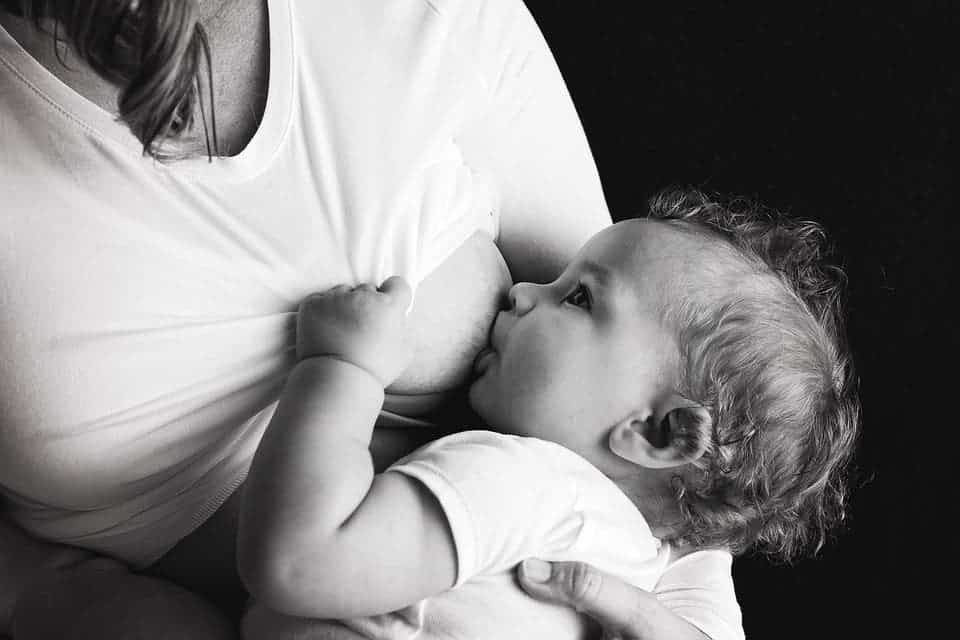Often lauded as nature’s perfect infant food, breast milk offers a combination of nutrients and antibodies uniquely tailored to the baby’s needs. But for all its benefits, breastfeeding is a choice fraught with complexities and challenges.

A golden standard of baby nutrition?
Breastfeeding is the practice of feeding a baby with breast milk — either directly from the breast by bottle-feeding. There are several advantages and disadvantages to breastfeeding, many of which have been studied and documented.
Regardless of how breastfeeding is done, however, most health organizations support breastfeeding, when possible.
“Breast milk is the ideal food for the healthy growth and development of infants; breastfeeding is also an integral part of the reproductive process with important implications for the health of mothers,” notes the World Health Organization.
Breast milk also seems to offer a range of benefits, ranging from brain advantages to better immunity. Breastfeeding seems to help babies’ health, improving their chances of survival in their first year of life.
Beyond its nutritional attributes, breastfeeding fosters a profound emotional connection between mother and child. The skin-to-skin contact and eye gazing during feeding time create bonds that last a lifetime. Furthermore, breastfeeding is often a more economical choice, bypassing the costs associated with baby formula. In terms of sustainability, breastfeeding offers an environmentally friendly option, free from the packaging, shipping, and manufacturing linked to formula production.
Remarkably, recent studies have found that breastfeeding may also provide some benefits for the moms, not just for the babies.
Good for the moms
For instance, one study led by Alison M. Stuebe from the University of North Carolina found that breastfeeding can be linked to blood pressure.
The 2011 study explored data from 56,000 U.S. women, finding that women who did not breastfeed were 22% more likely to develop high blood pressure than those who breastfed for at least six months. Though the results don’t prove a direct link, other evidence, such as the role of the hormone oxytocin in breastfeeding, suggests a connection.
Another study from 2018 found that breastfeeding can protect mothers from stroke. The study found that, after adjusting for non-modifiable risk factors, the risk of stroke was lower in women who had breastfed, with the risk reduction being 23% overall, 48% in black women, 32% in Hispanic women, 21% in white women, and 19% in women who breastfed for up to six months. Longer breastfeeding durations were associated with greater risk reduction.
Other studies have also found that breastfeeding can reduce the risk of several conditions, including Type 2 diabetes, heart disease, and breast cancer. This could be associated with the release of the hormone oxytocin, but the jury is still out on why exactly this happens. Nevertheless, breastfeeding, when possible, seems to suggest some significant health benefits for the mother.
However, the decision to breastfeed is not always straightforward.
Breastfeeding is not always an option
Breastfeeding can be very physically demanding. The challenges intensify for working mothers, who may face inadequate facilities or time to express milk during the workday. In addition, it can be difficult to fit breastfeeding into a busy schedule — no doubt, developing a complete baby feeding schedule isn’t easy for anyone. Some mothers can’t breastfeed, either due to health conditions or insufficient lactation.
In addition, there’s a lot of stigma associated with breastfeeding.
For one, there’s the stigma associated with women who can’t (or choose not to) breastfeed. This can lead to extra stress and pressure on mothers and produces societal pressure to breastfeed regardless of what the mothers want. Secondly, there’s also the stigma of breastfeeding in public. Most mothers are anxious or nervous about this, and many opt to avoid breastfeeding in public.
In fact, one study found that even in Organization for Economic Co-operation and Development (OECD) countries, there was limited evidence that women routinely breastfed outside of the home — and those who did often found the experience uncomfortable. Legal protections for breastfeeding in public, where present, were not widely known and appeared to be under-enforced.
To make matters even worse, aggressive campaigns by formula producers are murking the waters, sowing disinformation and making it difficult for mothers to actually gauge the real nutritional value of baby formula.
Ultimately, the choices around breastfeeding reflect the broader complexities of motherhood itself. The choice is deeply personal and must be navigated with care, empathy, and a recognition of individual circumstances.
Healthcare providers play an essential role in guiding mothers, assessing each situation, and offering support for the journey ahead. The choice between breastfeeding and formula feeding is multifaceted, reflecting not merely a medical decision but a profound intersection of health, culture, economics, and personal belief.
By acknowledging the complexities and embracing an environment that encourages informed decisions, we can create a world where every mother feels confident in her choice, be it breastfeeding, formula feeding, or a combination of both.






